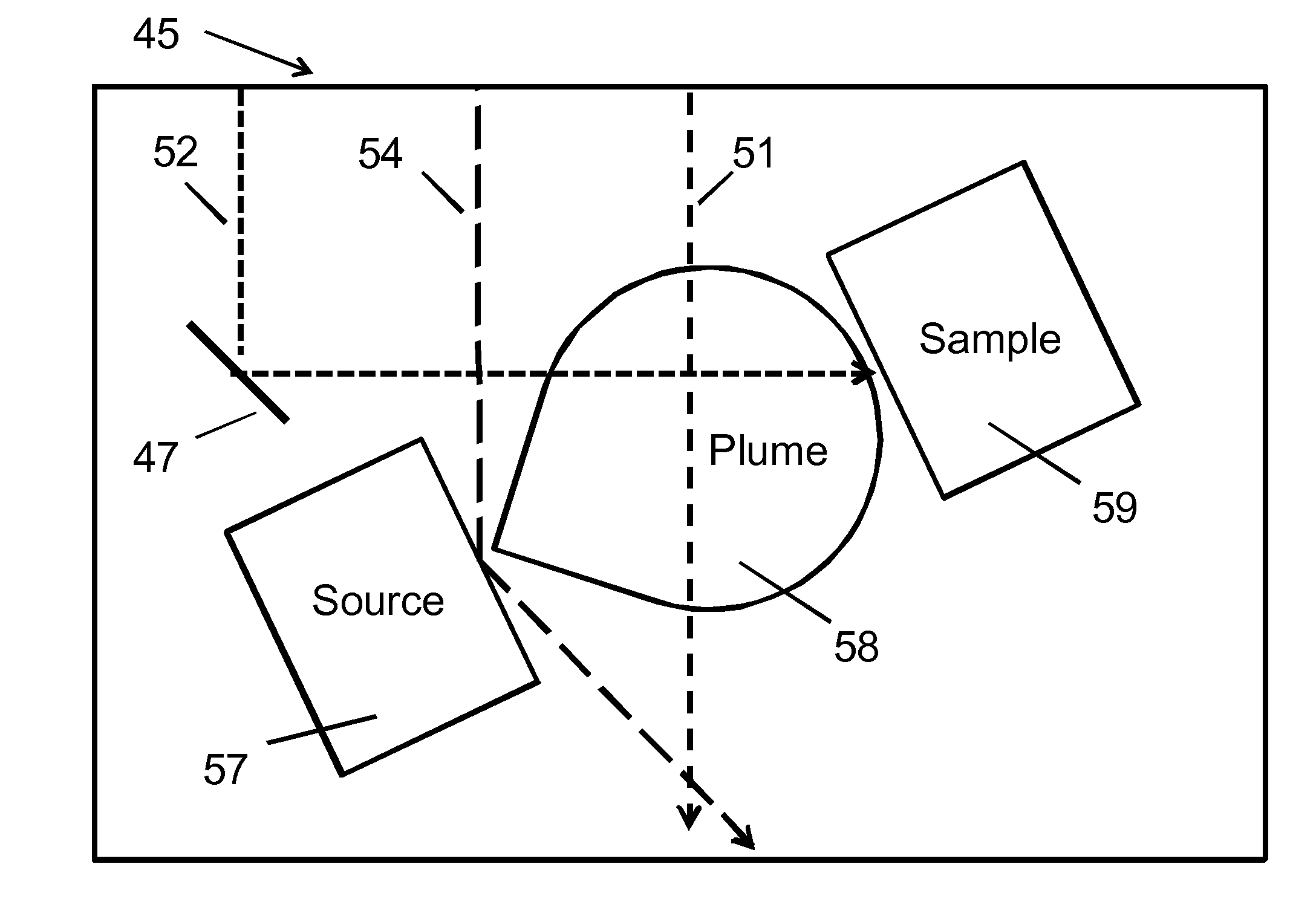Slab laser and amplifier and method of use
a laser amplifier and laser beam technology, applied in the direction of optical resonator shape and construction, nuclear engineering, railway components, etc., can solve the problems of limiting the maximum size of yag, vanadate or gain crystals, inefficiency of beam extraction from gain materials, and limiting efficiency of existing lamp pump designs primarily. , to achieve the effect of improving efficiencies and power handling capabilities, high efficiency
- Summary
- Abstract
- Description
- Claims
- Application Information
AI Technical Summary
Benefits of technology
Problems solved by technology
Method used
Image
Examples
example application
[0096 System
[0097]To illustrate how these components work and how they might be used, FIG. 14 shows a pulse from the source in a first seed laser 40 through the amplifier 42 and mirrors 48, 47 to its end point in the process chamber 45 and then we will repeat this for a second seed laser 41. The first seed laser 40 acts as a seed for the ultrafast amplifier chain 42. The pulse-length frequency and repetition rate is defined in this component according to the desired application. For example, it can produce a ½ nanosecond pulse, with this pulse having, e.g., a 100 nm wide bandwidth 750 nm to 850 nm, with pulses of, e.g., 312,500 per second being emitted. Alternatively, the fluorescence output bandwidth of Titanium Sapphire produces light from 650 nm to 1100 nm at the same rates as mentioned, allowing operation of the laser at those frequencies, where desirable.
[0098]The amplifier chain can comprise of a series array of amplifier modules such as shown in FIG. 1 for an example module, ...
PUM
| Property | Measurement | Unit |
|---|---|---|
| pulse width | aaaaa | aaaaa |
| angle | aaaaa | aaaaa |
| energy extraction efficiency | aaaaa | aaaaa |
Abstract
Description
Claims
Application Information
 Login to View More
Login to View More - R&D
- Intellectual Property
- Life Sciences
- Materials
- Tech Scout
- Unparalleled Data Quality
- Higher Quality Content
- 60% Fewer Hallucinations
Browse by: Latest US Patents, China's latest patents, Technical Efficacy Thesaurus, Application Domain, Technology Topic, Popular Technical Reports.
© 2025 PatSnap. All rights reserved.Legal|Privacy policy|Modern Slavery Act Transparency Statement|Sitemap|About US| Contact US: help@patsnap.com



